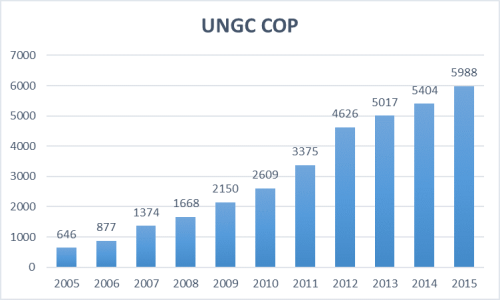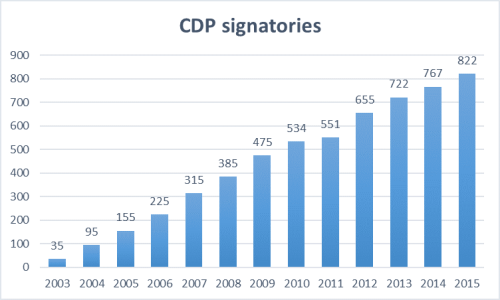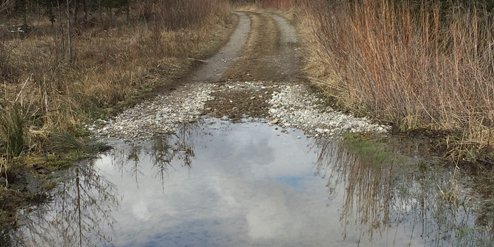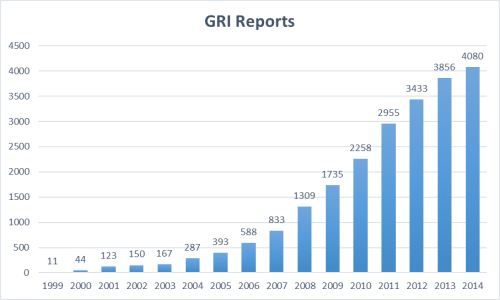You already have heard this acronym at work, and even came across a CSR report, and you will hear even more. Indeed, CSR reporting is growing.
CSR reporting is a communication tool on dedicated topics.
You may wonder: what is CSR reporting? There are different scientific and accepted definitions. Our definition is: any documentation related to the company’s management and performance regarding social and environmental topics that is disclosed publicly, and which aims at informing the stakeholders of how the companies manage the impacts towards them.
A stakeholder is said to be any party affected by the organization’s operations: shareholders, customers, suppliers, employees, local communities, civil society, industry, government… CSR reporting is then a tool to communicate the organization’s efforts to the impacted stakeholders.
We identified some of the main CSR reporting schemes
To bring more value to your reporting, you can use reporting standards and schemes. Although there are many CSR schemes, standards, ratings, we chose to focus on the ones which are leading in terms of influence and companies participating and which are not-for-profit organizations. The following list is then not exhaustive.
Regarding environmental reporting, you can choose to answer the CDP questionnaire, on water, climate change, or forest management. CDP[1] (Carbon Disclosure Project) is an NGOs collecting environmental data to ensure transparency to decision-makers like investors or clients.
To structure your CSR report, you can opt for two options: use the framework suggested by the United Global Compact, or use the GRI (Global Reporting Initiative) Guidelines.
When you adhere to the UNGC 10 principles[2], you have then to report your progress on a Communication On Progress. This can be a good idea for beginners, as this communication offers a structure which is not too much stringent.
Read our article for a full overview: https://dfge.de/un-global-compact-dfge-publishes-2015-cop-report/
For more experienced reporters we will suggest to use GRI Guidelines[3], where companies can identify the topics which are the most relevant for them and their stakeholders, and then report specific indicators accordingly (see our blog article for more information: https://dfge.de/understand-gri-in-2-minutes/).
CSR reporting has grown steadily over the past fifteen years
Over the past decade, CSR reporting has become mainstream. The figures show that the use of internationally recognized standards and schemes is steadily growing. This can be explained by the fact that these initiatives are multi-stakeholder, hence they are more objective than a stand-alone reporting. They also provide guidance and structure which can help the company identify gaps to improve on some areas.
(data extracted from the search function of GRI database, http://database.globalreporting.org/search)

CDP, in its 2015 activity report, indicates that they analyzed 1799 responses in 2010 against 1997 in 2015, showing also a growing participation. The number of signatories has also been increasing.

It means that companies have an advantage to report through these schemes: they are of interest for investors, clients, and other stakeholders.
What are the next trends in CSR reporting?
We believe that reporting will increasingly focus on sectorial-specific issues. Indeed, now that the general framework is somehow set and recognized by organizations, some more specific information can be added.
For instance, the Telecommunications sector is faced with the problematic of conflict minerals. Electronics companies now report on how they implement due diligence process in their supply chain and declare if they are conflict-free for the following materials: gold, tin, tantalum, tungsten. A dedicated guidance is provided by the CFSI (Conflict Free Sourcing Initiatives).[4]
We also think that more and more SMEs will report their CSR progress – as bigger companies will increase their pressure on suppliers to take the next step and report along the whole supply chain.
DFGE can guide you through your reporting process. Don’t hesitate to contact us for more information at or consult our website.
[1]CDP: https://www.cdp.net/en-US/Pages/HomePage.aspx
[2] UNGC: https://www.unglobalcompact.org
[3] GRI: https://www.globalreporting.org/standards/g4/Pages/default.aspx
[4] CFSI: http://www.conflictfreesourcing.org/conflict-minerals-reporting-template/http://www.conflictfreesourcing.org/conflict-minerals-reporting-template/http://www.conflictfreesourcing.org/
image link: https://pixabay.com/en/success-curve-hand-finger-touch-1093889/










